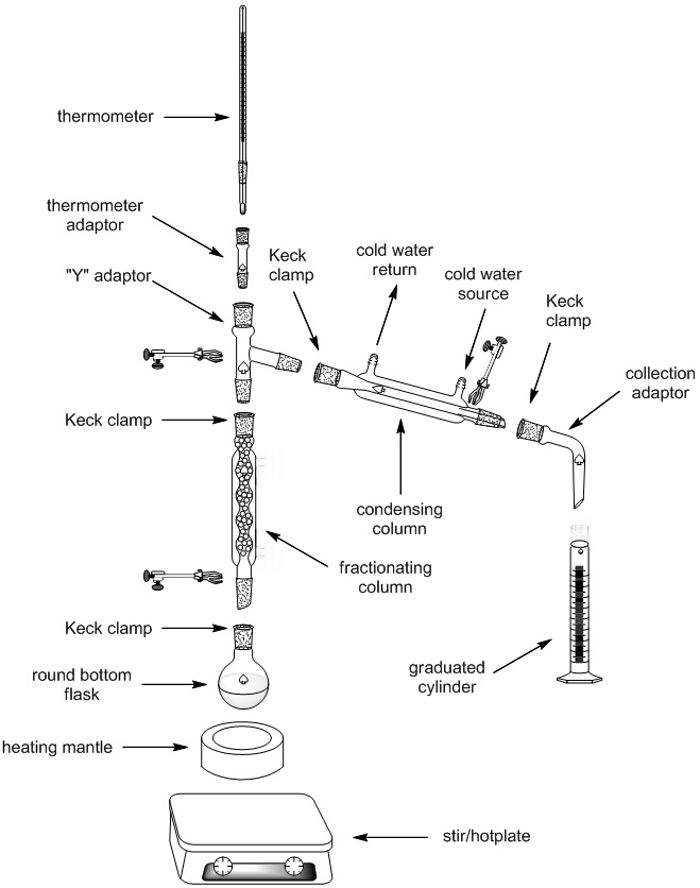Destilação Fracionária
Visão Geral
Fonte: Laboratório do Dr. Nicholas Leadbeater — Universidade de Connecticut
A destilação é talvez a técnica laboratorial mais comum empregada por químicos para a purificação de líquidos orgânicos. Compostos em uma mistura com diferentes pontos de ebulição se separam em componentes individuais quando a mistura é cuidadosamente destilada. Os dois principais tipos de destilação são "destilação simples" e "destilação fracionada", e ambos são amplamente utilizados em laboratórios de química orgânica.
A destilação simples é usada quando o líquido é (a) relativamente puro (contendo não mais do que 10% de contaminantes líquidos), (b) tem um componente não volátil, como um contaminante sólido, ou (c) é misturado com outro líquido com um ponto de ebulição que difere em pelo menos 25 °C. A destilação fracionada é usada ao separar misturas de líquidos cujos pontos de ebulição são mais semelhantes (separados por menos de 25 °C).
Este vídeo detalhará a destilação fracionária de uma mistura de dois solventes orgânicos comuns, ciclohexano e tolueno.
Procedimento
1. Configuração do aparelho de destilação fracionada















